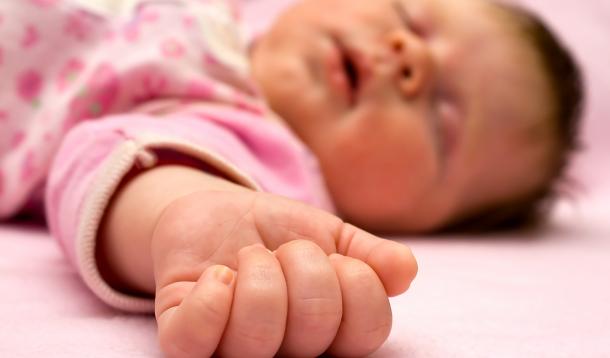
Our "Critter" (note: don’t encourage your four year-old to ‘name’ your baby!) is due any day now. Like us, if you are approaching your due date you are most likely busying yourself making the nursery pretty and welcoming – this is the fun part that you and your partner can get excited for. Most moms thrive in this excitement during the last few weeks of the nesting period. But don’t go crazy on the crib, as I am reminded of the importance of making sure the nursery is not just cute, but functional and safe. Sorry to be a downer.
Here are some things for the nursery area that require as much consideration as paint colour and wallpaper pattern:
Don’t go crazy on the crib.
There are many things to think about - where your baby sleeps, the sleeping position, temperature in the room, the kind of crib or bassinet and type of mattress are all important to consider. So many things to think about!
More than 50% of US infants are being placed to sleep with bedding that increases the risk of Sudden Infant Death Syndrome (SIDS).
On Dec 1, 2014 the American Academy of Pediatrics (AAP) and National Institute of Health in the United States published a release stating that more than 50% of US infants are being placed to sleep with bedding that increases the risk of Sudden Infant Death Syndrome (SIDS). SIDS is the unexplained death of a child in the first year of life, the stuff of nightmares. I have been lucky to never be involved in a case of SIDS, but I am aware of the devastating affect it has on a family.
What causes SIDS? Unfortunately, we don’t know. These babies have an unknown cause of death even after full investigation and autopsy. Many parents - myself included - fear it.
As the rate of SIDS dropped, there was a surge of new cases of child suffocation from blankets and bedding in the baby’s sleep space.
Almost 22 years ago, the AAP recommended that all babies be placed on their backs to sleep. This lead to a 50% reduced risk of SIDS, however, as the rate of SIDS dropped, there was a surge of new cases of child suffocation from blankets and bedding in the baby’s sleep space. What doesn’t help is the multitude of images that parents see in magazines and other media depicting infants sleeping on top of or under heavy blankets surrounded by bumpers and plush toys. So keep the sleeping area clean and uncluttered!
When is it Safe For A Child to Start Using a Pillow?
Here are some recommendations from me, as doctor and mom:
Where should baby sleep?
Both the Canadian Pediatric Society and American Academy of Pediatrics recommend babies sleep in a crib or bassinet in parents’ room for at least the first 6 months. The child should always be placed on his or her back. Sleeping in your room may decrease the risk of SIDS and allow for easier nighttime feeding - something every tired parent can be happy about!
Back to sleep
Babies should only sleep on their backs (have I said that yet?) It's really, really important. There should be no sleep-positioner or blankets underneath or around baby which could potentially cause suffocation. The best blanket is no blanket, just a tight fitted sheet around the mattress. Baby can be kept warm in appropriate sleeper clothing.
Firm, flat sleep surface
Air mattresses, couches, pillows, and waterbeds are unsafe sleep environments. If the surface is too soft, babies can roll and are at risk for being unable to breathe.
Nothing in the crib
Leave blankets, pillows, stuffed animals, and bumpers out of the crib.
Room temperature
Make sure the room is not too warm and that your child is not wearing too many layers. I suggest babies wear one layer more than parents in the same environment to keep them comfortable. A long sleeve onesie and a Sleep Sac is perfect in most environments.
Do not smoke
SIDS is more common in babies exposed to cigarette smoke. Do not smoke around your child and don’t smoke while pregnant.
Ensure your crib is safe
Make sure your crib or bassinet meets Health Canada’s safety standards. Be very leery of used cribs and bassinets as they won't meet current safety standards. May be best to avoid them entirely.
Bed sharing and co-sleeping with baby
Bed sharing can make breast-feeding easier on babies and moms. Many babies will sleep better when sharing the bed with parents. However, this is a risky practice as adult beds and bedding are not made with babies in mind and can increase the risk of SIDS and suffocation. A baby can become trapped between the mattress and the wall, can fall off the bed, or an adult can roll on top of the baby, suffocating it.
Similarly, sleeping with a baby in a chair or couch is risky as the baby may become lodged between the couch cushions, or fall. This is especially true if the parent or caregiver has been drinking alcohol or using drugs.
I know this all may sound limiting. When you are sleep deprived and trying to start breast-feeding off right you may feel inclined to co-sleep or sleep with your baby in a chair. PLEASE TRY NOT TO. It’s not worth the risk. The first couple of months are challenging for sure, but you will get through them and have a healthy sleeping baby before you know it!
Please keep your baby on his or her back, in a crib or bassinet, in your room with nothing in the crib for the first 6 months.
Curious how much sleep your baby needs? You can also follow Dr. Dina on her Facebook page for more information on pregnancy and children’s health.